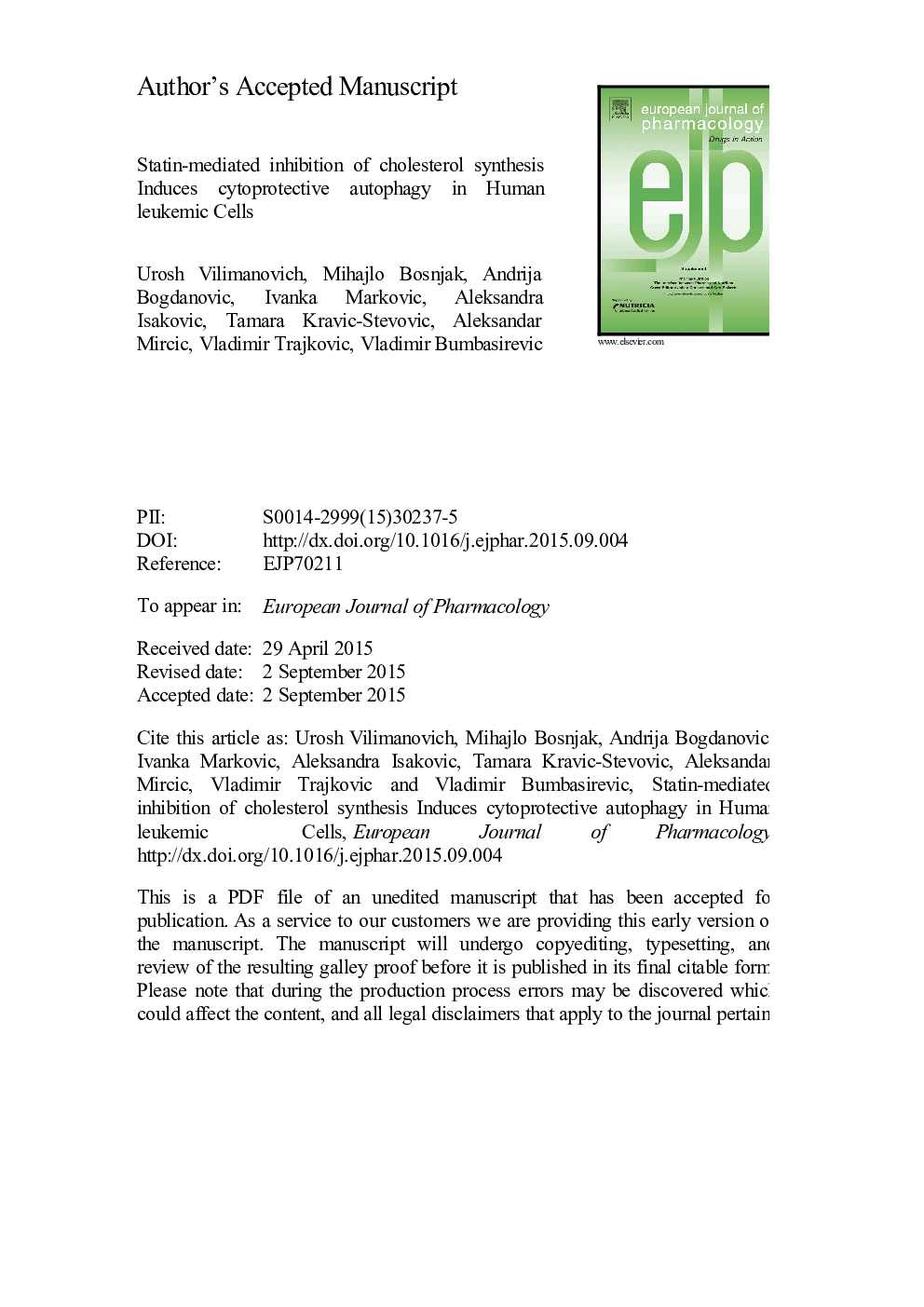| Article ID | Journal | Published Year | Pages | File Type |
|---|---|---|---|---|
| 5826881 | European Journal of Pharmacology | 2015 | 56 Pages |
Abstract
Statins exhibit anti-leukemic properties due to suppression of the mevalonate pathway by the inhibition of 3-hydroxy-3-methylglutaryl coenzyme A reductase, and subsequent depletion of cholesterol, farnesylpyrophosphate, and geranylgeranylpyrophosphate. We investigated the role of autophagy, a controlled intracellular self-digestion, in the anti-leukemic action of statins. Treatment with low concentrations (â¤6 µM) of statins, cholesterol depletion, and specific inhibition of cholesterol synthesis and protein farnesylation or geranylgeranylation, all inhibited proliferation of leukemic cell lines and primary leukemic cells without inducing overt cell death. Statins and agents that selectively reduce intracellular cholesterol levels, but not the inhibition of protein farnesylation or geranylgeranylation, induced autophagy in leukemic cells. The observed autophagic response was associated with the reduction of phosphorylated Akt levels in the lipid rafts, accompanied by a decrease in the activation of the main autophagy suppressor mammalian target of rapamycin (mTOR) and its substrate ribosomal p70S6 kinase (p70S6K). No significant autophagy induction and downregulation of mTOR/p70S6K activation were observed in normal leukocytes. Autophagy suppression by bafilomycin A1 or RNA interference-mediated knockdown of beclin-1 and microtubule-associated protein 1 light chain 3B induced apoptotic death in statin-treated leukemic cells, an effect attenuated by the addition of mevalonate or squalene, but not farnesylpyrophosphate or geranylgeranylpyrophosphate. Therefore, while the inhibition of cholesterol synthesis, protein farnesylation, and geranylgeranylation all contributed to anti-leukemic effects of statins, the inhibition of cholesterol synthesis was solely responsible for the induction of cytoprotective autophagy. These data indicate that combined treatment with statins and autophagy inhibitors might be potentially useful in anti-leukemic therapy.
Keywords
Related Topics
Life Sciences
Neuroscience
Cellular and Molecular Neuroscience
Authors
Urosh Vilimanovich, Mihajlo Bosnjak, Andrija Bogdanovic, Ivanka Markovic, Aleksandra Isakovic, Tamara Kravic-Stevovic, Aleksandar Mircic, Vladimir Trajkovic, Vladimir Bumbasirevic,
